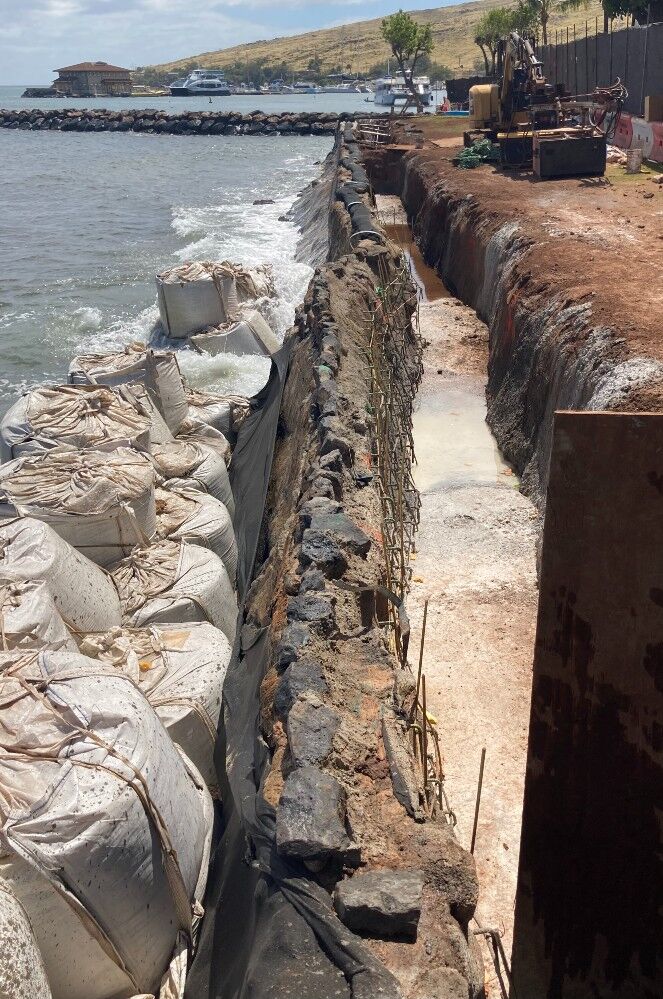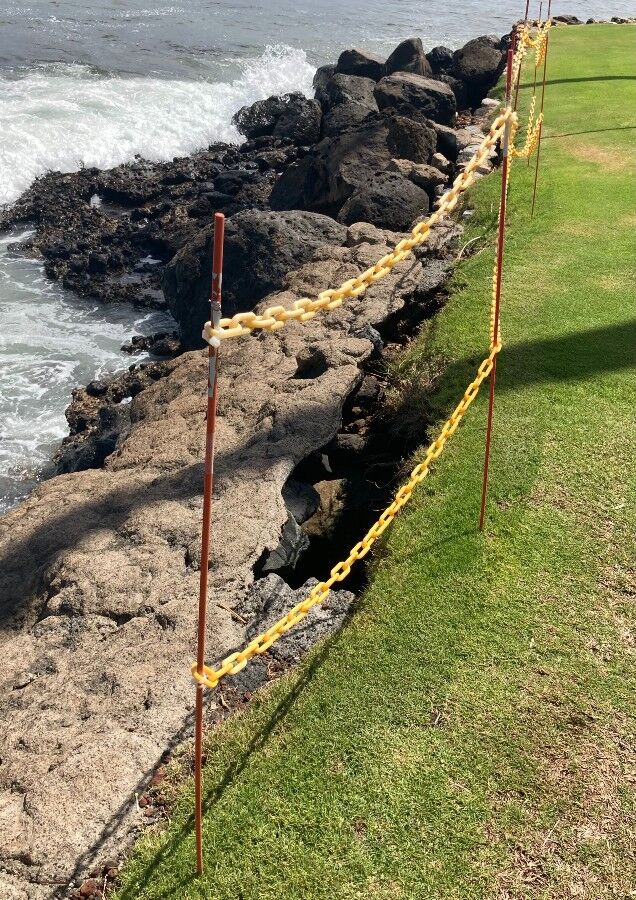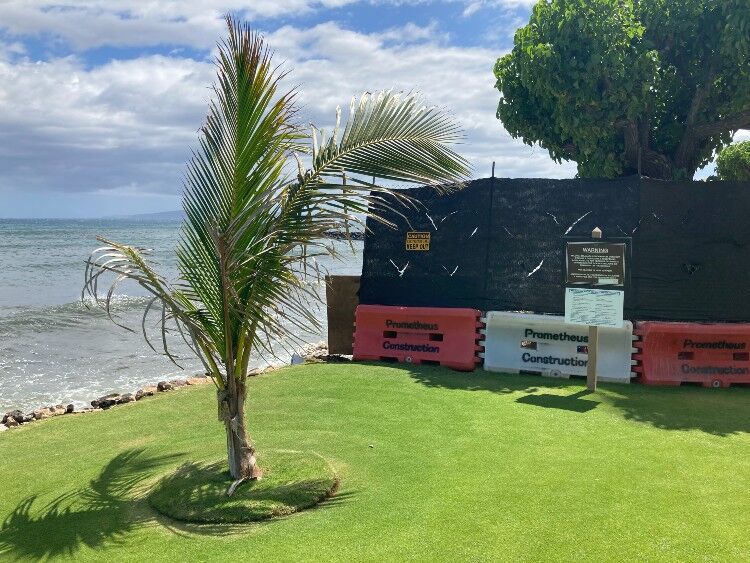Image


Strolling along the public access trail from Ma’alaea Harbor northeast to the nearby strip of condominium buildings, walkers have to notice what might appear to be gigantic white boulders.
But they’re not big rocks, nor even solid, really. They are huge bags of sand placed in front of the Milowai Condominium Resort. The property is among 8 condo complexes along the shoreline south of the harbor ~ but unfortunately it was built closest to the shore.
Not only does Maui have the highest beach erosion rate in the state of Hawai’i, but Ma’alaea properties (which also include 2 single-family properties) have erosion rates higher than average for the islands.
Not a New Challenge
“Beach erosion is the dominant trend of shoreline change in Hawaii,” noted a report released in 2012 by the U.S. Geological Survey, which studied beach erosion trends statewide for a period of about 2 decades.
Since that report, the erosion worsened on the residential side of Ma’alaea, to what some experts say is up to 2 feet per year ~ compared with the island-wide average of less than a foot lost annually.
Beach erosion experts cite many reasons for the woes, including long-term narrowing of beaches and land movement due to the rise in sea level. In other words, climate change.
But that’s just one contributor. Overall, other factors play a part, including event-based incidents like powerful storms; ocean conditions like big swells; and human additions like building walls at shorelines.
While ultimately many properties in Ma’alaea could require a shoreline shore-up, at the moment Milowai Condominium Resort is taking the brunt. The complex’s pool is closed due to the considerable amount of construction needed to reinforce a barrier, while at the same time keeping the oncoming waves at bay.

Hence the huge white sandbags.
While that’s the only spot along this small stretch of Maui coastline with clear erosion-combating activity, there are signs close by that other properties may be next.
The southwest corner of the Ma’alaea Kai Condominiums property, not far from the construction work in front of the Milowai condos, has a small temporary fence keeping passersby away from an unstable section of sea wall. A deep gap is clearly evident between the sinking wall and the property’s turf.

Not far away is a single palm tree that’s much younger and much smaller than the rest on the Kai condos property ~ which locals say was planted recently in an attempt to help stabilize the ground close to shore.

County officials are actively working with state and federal regulators on permitting for erosion-repair and -control measures, work expected to take at least about 4 years. Officials note that much of the infrastructure along that coastline was implemented in the 1970s, prior to significant coastal oversight and regulation.
Government agencies also are trying to identify funding for what will amount to multiple beach nourishment and dune restoration projects. Along the way, to begin better addressing problems that have occurred in other parts of Maui also, officials suggest shifting how they deal with beaches from individual strips of sand to a “regional beach cell approach.”
Such a strategy will allow government agencies to consider impacts of one beach-change project on another nearby, for instance. Meanwhile, they look to proactively restore beaches where they can, and seek public-private partnerships if possible.